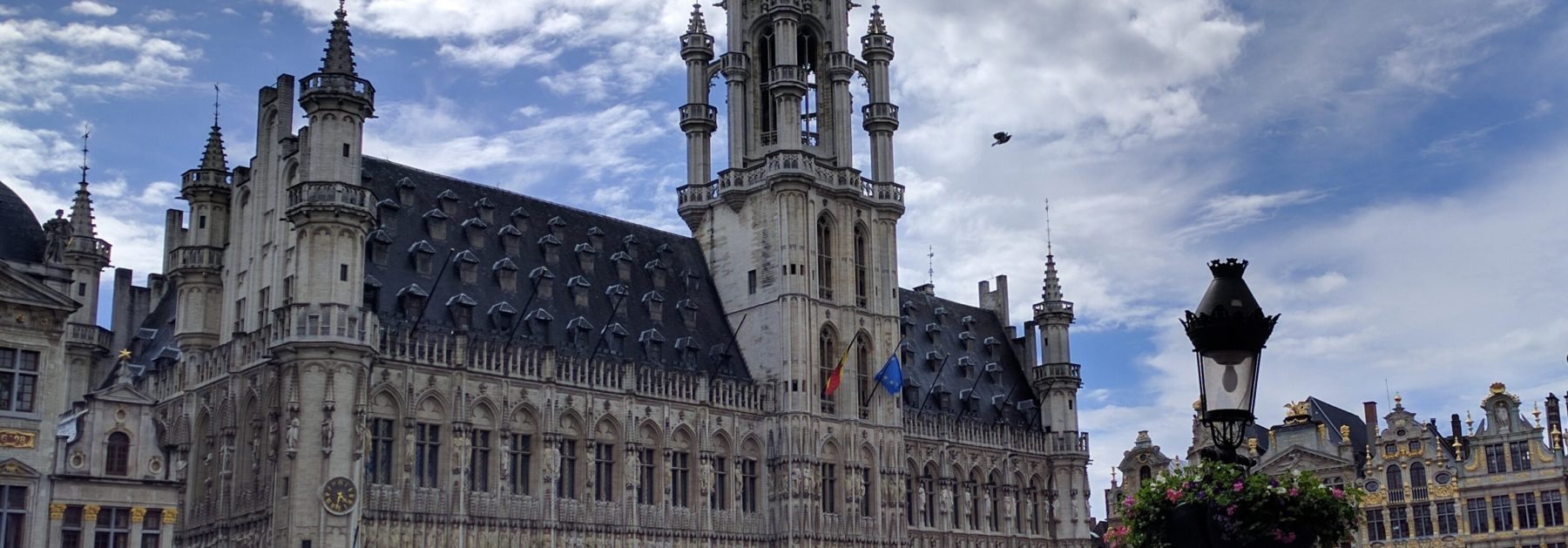Brussels On a Budget
Looking for an affordable last-minute summer city break? Planning on making Brussels part of your next Interrail itinerary? Want to explore Europe but don’t have the time or money to visit more than one place? When I impulsively booked a week’s break in Brussels with my boyfriend just two weeks beforehand, neither of us knew what to expect. What we found was an exciting, affordable city teeming with enough history and culture to rival the bigger European cities. Here’s why you should add the home of Tintin and the Smurfs to your travel bucket list, and how to keep it student budget-friendly:
Transport
For travelling to and from Brussels, the cheapest option was to get the National Express to Brussels for £46 each, and the Megabus back home for £30 each. It would cost even less booked earlier in advance, but this was still cheaper than many one-way train journeys in the UK. Including a ferry crossing, the journey takes about 14 hours, so it’s important to make sure you’re comfortable! Wear clothes that you can layer, preparing you for sleeping through cooler nights or, as I discovered the hard way, surviving broken air conditioning on a hot day.
Brussels is by no means a huge city, and many of the sights were easily walkable, but when your hostel is a half-hour walk from the centre, and for visiting attractions further out, it saves money and simplifies planning routes to use the metro. A MOBIB card, similar to an Oyster card, can be bought with ten journeys on it for 14 euros, an ample amount for our week-long visit.
Additionally, the ‘B-excursion’ system allows you to travel out of Brussels and see more of Belgium for a low cost – we used it for a day trip away from the cities to a beautiful wildlife park, and our tickets to Antwerp, when combined with entry to its zoo, were cheaper than the cost of a return ticket to the city.
Accommodation
One of the most attractive things to a student is cheap accommodation – for this reason I would definitely recommend Hello Hostel. At under £20 per night including a basic but filling breakfast, the small, vibrantly-decorated hostel is situated away from the city centre, but conveniently opposite a metro station (and next to an enormous chocolate factory). The Spanish owners are incredibly friendly and helpful, whether recommending the best Belgian beers or suggesting the less well-known sights to see.
Something to consider when travelling with a partner is the option to book a private room, as an excellent alternative to a shared dorm at the same price. Though it had the same facilities than the dorm rooms, we had the advantage of being able to safely leave and lock our bags there like in a hotel room, and it offered the privacy you don’t get sharing a room with strangers.
This particular hostel also offers free coupons giving discounts to various attractions, alongside city maps made by, and targeted towards, young travellers and locals. These are hugely helpful as they offer hints and tips for students on a budget, locating the cheapest bars, clubs and restaurants. It was thanks to this that I found the best Chinese food I’d ever eaten, at only 6 euros for a huge meal.
Sightseeing
The old and new parts of Brussels are distinctly different. The area around the Grand Place (pronounced with a French accent), a huge market square surrounded with dramatic Gothic architecture, and the Notre Dame cathedral, is full of whimsically-decorated tourist shops and restaurants. Nearby is the Mannekin Pis; for some reason a tiny statue of a child urinating is one of Brussels’ most iconic landmarks, but it’s on the wall of an amazing chocolate shop which more than makes up for how underwhelming it actually is.
In contrast, the fast-paced modern side of the city presents you with skyscrapers and businesspeople in suits hurrying past, while traffic rushes around you from all sides driving foreign delegates around. Our visit to the European Parliament building was the week before the EU referendum, giving us a sense of just how important this city is.
Other sights to look out for include the Atomium, an exhibition shaped like a giant atom built for the 1958 World’s Fair, and the artwork on the metro stations – each one is uniquely decorated with everything from comic-book artwork to tapestry-style paintings. The view outside the Palace of Justice offers a vista of the entire city that easily rivals the view of Paris from Sacre Couer.
Food and Drink
Forget summer bodies when visiting Brussels – it’s famous for its waffles, beer, chocolate and frites! It’s cheaper, more authentic, and just as delicious to get waffles sold from one of the many vans around the city instead of a restaurant. Though it’s recommended to buy the variety of local beers and chocolate from smaller, cheaper places, the bigger, more popular shops and bars look gorgeous and are worth visiting (especially for the free chocolate samples). We used our hostel discount coupons in the Belgian Chocolate Village, where you can watch the chocolate being made and, most importantly, get to sample it.
The hostel we stayed in serves pizza cheaply, but also provides a fairly large kitchen. As important as it is to try the local restaurants, it often proved cheaper to stock up on the breakfast provided in the hostel, fill up on cheap snacks throughout the day, and bring supermarket food back to the hostel to cook. Affordable restaurants are not difficult to find, however; whilst not the most authentic Belgian cuisine, I would recommend an all-you-can-eat Tex Mex buffet restaurant not far from the Grand Place for 12.50 each.
With its attractive and unique mix of history, culture, affordability, fascinating sights and brilliant food, Brussels is a must-see city for any student wanting to see the best of Europe.


Comments